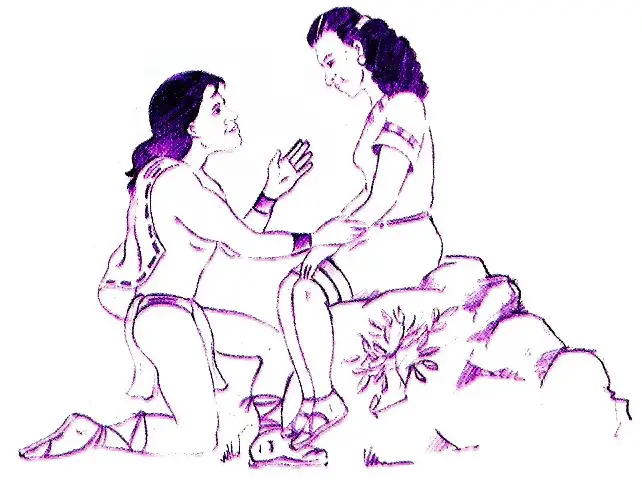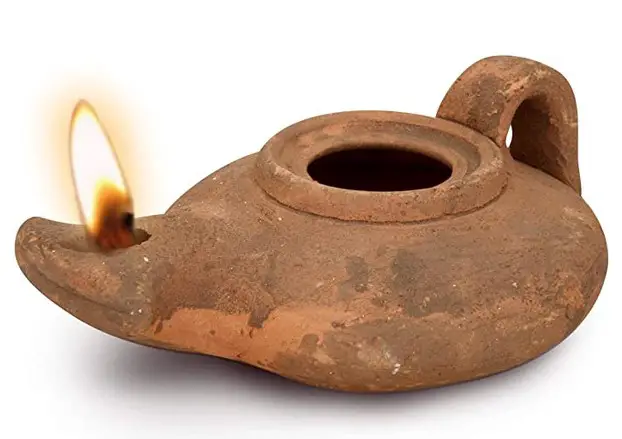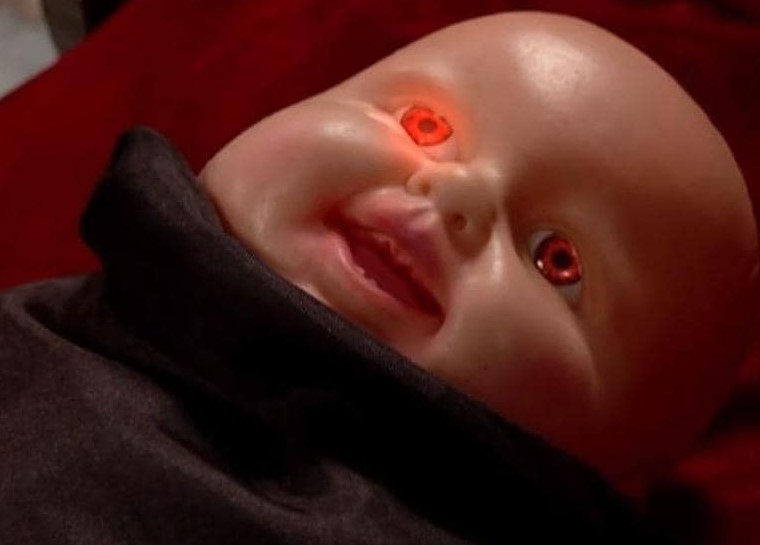Podcast: Play in new window | Download
Subscribe: Apple Podcasts | RSS
Located on Mexico’s Pacific coast, the state of Guerrero is full of geographical contrasts and cultural diversity. It is home to over 3.5 million people and has many legends. Here are 4.
- The Love Story of Acátl and Quiáhuitl
This love story weaves history with legend and dates back over 500 years. The Yope people was once lived in the vicinity of present-day Acapulco and into the mountainous region to the north. The Yope called themselves the Méphaa and were known to the Aztecs as Tlapaneca. There were 4 independent Yope kingdoms in what is now Guerrero which formed a loose alliance known to history only by the names the Aztecs had for them: Cacahuatépec, Pochotitlan, Xocotlan, and Xochitépec. In the late 1400s the Aztec Empire was expanding south into Yope territory and the people of one  Yope village were forced to relocate away from their ancestral lands overlooking a beautiful bay after the Yope lost to the Aztecs in battle. The Aztecs would have a weak hold over their newly conquered southern lands, but during the time they had established themselves in this piece of former Yope territory, the wife of the Aztec military governor gave birth to a little boy who was named Acátl, which translates to English as “reed.” At the time of the boy’s birth, Acátl’s father entrusted his son to the protection of the god Quetzalcóatl. After some time, and seeing little economic or political advantage to staying in the area, the Aztecs left the place seized from the Yope and went to settle in a more established part of the Aztec Empire nearby. As the years passed, Acátl reached the age to look for a wife, and with his father’s consent, he set out in search of her. During his wanderings Acátl arrived at the site of the Yope village that had been displaced by the actions of his father many years before. The young man fell madly in love with Quiáhuitl, the Yope village chief’s daughter, without knowing that she belonged to the tribe that his father had defeated. The father of Quiáhuitl hated the father of Acátl for having expelled him from his lands, so he refused to consent to the wedding and cursed Acátl, invoking the powerful Yope gods to put a curse on him. Saddened, Acátl took the road back home and gave in to his disappointment and sadness, without knowing about the Yope curse. He cried so much that the uncontrollable tears from his eyes moistened his athletic body, which little by little was undone, melting completely, to become a puddle of mud and not blood. From that puddle, like children of Acátl – reeds – began to sprout. When the god Quetzalcóatl saw what happened, he furiously punished the Yope in the person of Quiáhuitl, whom he turned into a cloud charged with energy. One afternoon that cloud appeared near the bay where the Yope lived and having located the reeds, sons of her beloved Acátl, fury and jealousy overcame Quiáhuitl, and she immediately threw herself upon the reeds in the form of a waterspout, thus shredding them and therefore merging with Acátl. In this act of destruction, the two young people who belonged to two opposing peoples could be together forever. This legend of Acátl and Quiáhuitl give rise to the word “Acapulco,” a literal combination of the words Acátl and Quiáhuitl, which when put together mean “reeds destroyed in the mud”, “place of the reeds in the mud”, or “place where the reeds were destroyed.” In the name of a popular Mexican coastal resort town, the legend of the star-crossed lovers lives on.
Yope village were forced to relocate away from their ancestral lands overlooking a beautiful bay after the Yope lost to the Aztecs in battle. The Aztecs would have a weak hold over their newly conquered southern lands, but during the time they had established themselves in this piece of former Yope territory, the wife of the Aztec military governor gave birth to a little boy who was named Acátl, which translates to English as “reed.” At the time of the boy’s birth, Acátl’s father entrusted his son to the protection of the god Quetzalcóatl. After some time, and seeing little economic or political advantage to staying in the area, the Aztecs left the place seized from the Yope and went to settle in a more established part of the Aztec Empire nearby. As the years passed, Acátl reached the age to look for a wife, and with his father’s consent, he set out in search of her. During his wanderings Acátl arrived at the site of the Yope village that had been displaced by the actions of his father many years before. The young man fell madly in love with Quiáhuitl, the Yope village chief’s daughter, without knowing that she belonged to the tribe that his father had defeated. The father of Quiáhuitl hated the father of Acátl for having expelled him from his lands, so he refused to consent to the wedding and cursed Acátl, invoking the powerful Yope gods to put a curse on him. Saddened, Acátl took the road back home and gave in to his disappointment and sadness, without knowing about the Yope curse. He cried so much that the uncontrollable tears from his eyes moistened his athletic body, which little by little was undone, melting completely, to become a puddle of mud and not blood. From that puddle, like children of Acátl – reeds – began to sprout. When the god Quetzalcóatl saw what happened, he furiously punished the Yope in the person of Quiáhuitl, whom he turned into a cloud charged with energy. One afternoon that cloud appeared near the bay where the Yope lived and having located the reeds, sons of her beloved Acátl, fury and jealousy overcame Quiáhuitl, and she immediately threw herself upon the reeds in the form of a waterspout, thus shredding them and therefore merging with Acátl. In this act of destruction, the two young people who belonged to two opposing peoples could be together forever. This legend of Acátl and Quiáhuitl give rise to the word “Acapulco,” a literal combination of the words Acátl and Quiáhuitl, which when put together mean “reeds destroyed in the mud”, “place of the reeds in the mud”, or “place where the reeds were destroyed.” In the name of a popular Mexican coastal resort town, the legend of the star-crossed lovers lives on.
- The Woman and the Lamp
 This story takes place on the state of Guerrero’s Costa Grande between the towns of Carrizal and Mitla. There once lived a woman in the area who was amassing a stash of gold coins so that she could make a pilgrimage to Rome to see the Pope. Since there was no type of modern transportation in the place where she lived, she had to walk along the entire length of the beach until she reached Acapulco, which was a day and a half away. With excitement, she told the whole town of her plans. On the day of her trip, she left for Acapulco at four in the morning. It was a moonless night, so she only guided herself with the foam of the sea and an oil lamp. She had already been on the road for an hour when some men attacked her, murdered her, and stole her coins. It is so that now on nights when there is no moon, you can see the light of a lamp along the shore of the Costa Grande between Carrizal and Mitla. The poor woman with the oil lamp is still trying to walk the beach to get to Acapulco, albeit in ghostly form.
This story takes place on the state of Guerrero’s Costa Grande between the towns of Carrizal and Mitla. There once lived a woman in the area who was amassing a stash of gold coins so that she could make a pilgrimage to Rome to see the Pope. Since there was no type of modern transportation in the place where she lived, she had to walk along the entire length of the beach until she reached Acapulco, which was a day and a half away. With excitement, she told the whole town of her plans. On the day of her trip, she left for Acapulco at four in the morning. It was a moonless night, so she only guided herself with the foam of the sea and an oil lamp. She had already been on the road for an hour when some men attacked her, murdered her, and stole her coins. It is so that now on nights when there is no moon, you can see the light of a lamp along the shore of the Costa Grande between Carrizal and Mitla. The poor woman with the oil lamp is still trying to walk the beach to get to Acapulco, albeit in ghostly form.
- The Golden Worm
In the town of El Liberal, in the municipality of Teloloapan, lived a man named Otoniel. He was a farmer who was dedicated to planting corn, squash and beans, and taking care of a few heads of cattle and goats that he had. On one occasion, when he was plowing his land to plant crops, he saw something glimmering in the sun. He went over to investigate and realized that it was a worm of pure gold, about a foot long or so. This worm was alive, and it was crawling along the ground. The farmer took it in his hands and at that moment he heard a voice in his head, almost as if the worm was communicating with him telepathically: “Let’s make a deal,” the voice said. “If you take me home and treat me well, giving me all that I ask for, and feed me what I want, as a thank you, I will give you gold coins”. Otoniel accepted the deal and took the worm to his house. He locked it in a room and he brought the worm everything it asked for, and the worm, in return, produced several gold coins scattered around. This is how the years passed: Otoniel became rich, he bought a lot of land and cattle and hired many laborers to work for  him. So much wealth aroused the envy and ambition of one of his brothers, whose name was Alejandro. This one, cunningly, made his brother Otoniel drink too much one night to the point of getting him drunk, and then he asked him: “Hey brother, where do you get so much money?” Otoniel, as he was drunk, confessed the truth: he told his brother about the golden worm that he had found and then he passed out. Alejandro took advantage of the moment to enter the room where the golden worm was, grabbed it and took it to his house. There he locked the worm in a room and gave it food. He left the worm alone and the next day he went to look out to see how many gold coins it had left. But Alejandro’s surprise was great when he saw that there was no worm, and the only thing he found was a vine in the shape of a worm and instead of gold coins, a pile of stones. People say that this golden worm only appears to people with a good heart, or to those whom the golden worm likes, to help them and offer its services; but if someone with a bad heart or envious disposition manages to find the worm or grab it, then it stops being made of gold and becomes a stick or a dead vine, to punish, in this way, the ambitious.
him. So much wealth aroused the envy and ambition of one of his brothers, whose name was Alejandro. This one, cunningly, made his brother Otoniel drink too much one night to the point of getting him drunk, and then he asked him: “Hey brother, where do you get so much money?” Otoniel, as he was drunk, confessed the truth: he told his brother about the golden worm that he had found and then he passed out. Alejandro took advantage of the moment to enter the room where the golden worm was, grabbed it and took it to his house. There he locked the worm in a room and gave it food. He left the worm alone and the next day he went to look out to see how many gold coins it had left. But Alejandro’s surprise was great when he saw that there was no worm, and the only thing he found was a vine in the shape of a worm and instead of gold coins, a pile of stones. People say that this golden worm only appears to people with a good heart, or to those whom the golden worm likes, to help them and offer its services; but if someone with a bad heart or envious disposition manages to find the worm or grab it, then it stops being made of gold and becomes a stick or a dead vine, to punish, in this way, the ambitious.
- The Strange Baby Boy
It was almost nightfall and Don José, after having worked long hours on his corn crop, decided to take the little path to his town located a few miles below the hill from where his crops were located. Before arriving in town, he decided to have a mezcal in Don Javier’s cantina where all the men of the area met. He said to himself, “A good stiff drink before going to sleep never hurt anyone.” So Don José entered the cantina, running into Don Genaro and Don Joaquín, old friends who at that moment were talking about the news that was on everyone’s lips: After 12 midnight on most nights the devil had been appearing around town. A woman had seen him in the form of a black dog, another man had seen him in the form of a bull, and so on, and they narrated many anecdotes. Don José added to the conversation and said, “This is just gossip from old women and scared wives who want to have us home early. They don’t want us out drinking like this. Let’s not pay attention to that nonsense.” Immediately afterwards, Don José, after drinking his last mezcal, decided to leave the place, crossing part of the town that lacked much public lighting. He could only see the cobbled street by the light of the moon. Suddenly, he heard a noise like a slight moan, he thought that perhaps it was a cat, and he did not pay much attention, so he continued on his way. A little farther  down the road he heard the same noise again more clearly now but this time it sounded like a cry from a baby. He followed the cry and found out that it was coming from the side of an old abandoned house. He noticed by a crumbling wall there was a lump that moved. He approached cautiously until he discovered that inside a blanket was a crying baby. “A thousand times cursed is the woman who abandoned you chico,” said Don José. “This is not your fault.” He decided to take the baby in his arms and take him home to figure out the mystery of the baby’s parentage later. On the way home, little by little the baby controlled his crying. As Don José moved forward, he felt the bundle of the baby he was carrying in his arms become heavier and heavier. There came a time when he decided to slow his pace because the baby’s bundle was too heavy. Don José decided to stop and open the baby’s blanket to see the little face of the child. Before he had a chance to say anything, the baby exclaimed in a deep voice: “DADDY, LOOK AT MY TEETH”. Don José was horrified to see the baby’s red eyes like burning coals and those long fangs that came out of the baby’s mouth. He dropped his bundle and ran aimlessly. Many say that Don José went crazy and lost his sanity forever. Others say that he arrived at his house frightened, telling his wife of the terrifying encounter, after which he remained with very high fevers for three days in a row until he died. Nobody knows exactly what happened.
down the road he heard the same noise again more clearly now but this time it sounded like a cry from a baby. He followed the cry and found out that it was coming from the side of an old abandoned house. He noticed by a crumbling wall there was a lump that moved. He approached cautiously until he discovered that inside a blanket was a crying baby. “A thousand times cursed is the woman who abandoned you chico,” said Don José. “This is not your fault.” He decided to take the baby in his arms and take him home to figure out the mystery of the baby’s parentage later. On the way home, little by little the baby controlled his crying. As Don José moved forward, he felt the bundle of the baby he was carrying in his arms become heavier and heavier. There came a time when he decided to slow his pace because the baby’s bundle was too heavy. Don José decided to stop and open the baby’s blanket to see the little face of the child. Before he had a chance to say anything, the baby exclaimed in a deep voice: “DADDY, LOOK AT MY TEETH”. Don José was horrified to see the baby’s red eyes like burning coals and those long fangs that came out of the baby’s mouth. He dropped his bundle and ran aimlessly. Many say that Don José went crazy and lost his sanity forever. Others say that he arrived at his house frightened, telling his wife of the terrifying encounter, after which he remained with very high fevers for three days in a row until he died. Nobody knows exactly what happened.
REFERENCES
Gracias to the Para Todo Mexico website (and for other internet research for some of the historical stuff).
